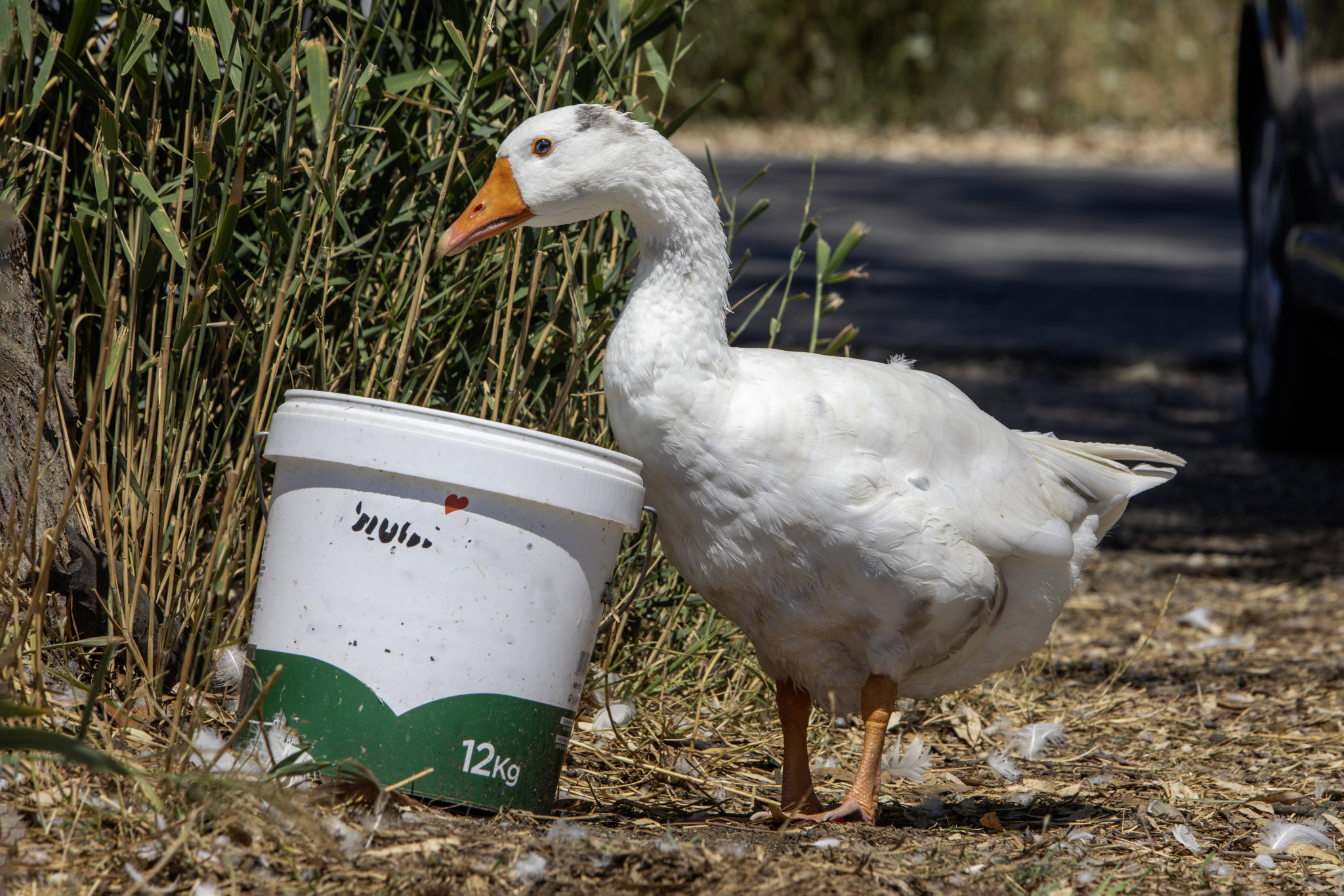Domestic geese are domesticated varieties of wild geese (Anser anser) and swans (Cygnus spp.), primarily bred for meat, eggs, feathers, and as ornamental birds. Here are some key features and characteristics of domestic geese:
- Appearance: Domestic geese come in various breeds, each with its own unique appearance. They generally have a plump body, long neck, and broad, flat bill. Their plumage can range from pure white to gray, brown, or patterned with different colors. Some breeds may have distinctive features like knobbed heads or curly feathers.
- Size: Domestic geese vary in size depending on the breed, ranging from small bantam geese to larger breeds such as Embden and Toulouse geese. Adult domestic geese typically weigh between 5 to 12 kilograms (11 to 26 pounds), with some larger breeds reaching up to 20 kilograms (44 pounds) or more.
- Habitat: Domestic geese are adaptable birds and can thrive in a variety of environments, including rural farms, suburban areas, and urban parks. They require access to water for swimming and foraging, as well as shelter from the elements, such as a coop or sheltered area for roosting and nesting.
- Diet: Domestic geese are primarily herbivorous and feed on a diet of grass, weeds, grains, and other vegetation. They are also grazers and will forage for insects, snails, and other small invertebrates. Commercially raised geese may be fed a balanced diet of grains and protein supplements to promote growth and egg production.
- Behavior: Domestic geese are social animals that typically form flocks, with a hierarchical structure led by a dominant pair or individual. They communicate through vocalizations, honking, and body language. Geese are known for their loud calls and honks, which they use to alert the flock to potential threats.
- Reproduction: Domestic geese are prolific breeders and will lay eggs once they reach sexual maturity, typically around 6 to 9 months of age. They typically lay clutches of 5 to 15 eggs, depending on the breed, with an incubation period of around 28 to 35 days. Goslings hatch from the eggs and are cared for by their parents until they are fully grown.
- Uses: Domestic geese have been bred for various purposes, including meat production, egg production, feather production (for down and feathers), weed control (as grazers), and as ornamental birds in parks and gardens. Geese are also valued for their role in pest control, as they can help control insect populations by foraging in fields and gardens.
Overall, domestic geese are versatile and economically important birds, valued for their meat, eggs, feathers, and as companions or ornamental birds. They have been domesticated for thousands of years and have played important roles in agriculture and human culture worldwide.
Visited 217 times, 26 visit(s) today
Views: 367
Subscribe to the newsletter:
